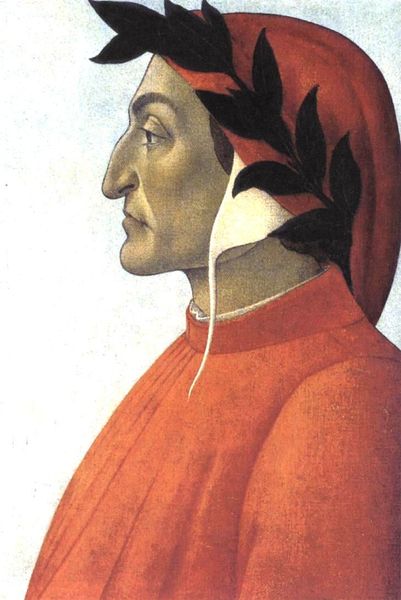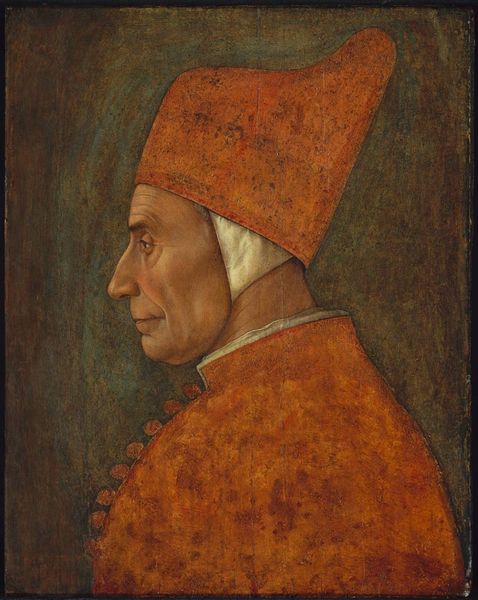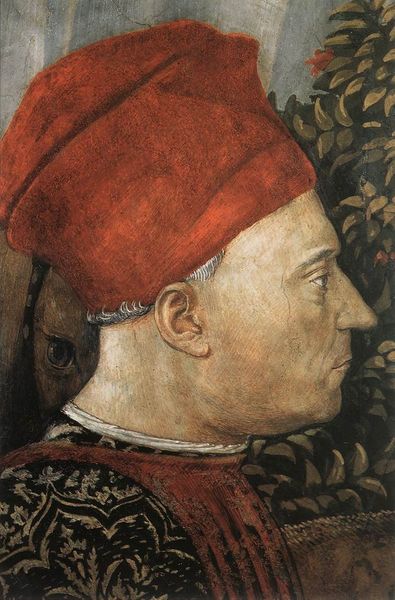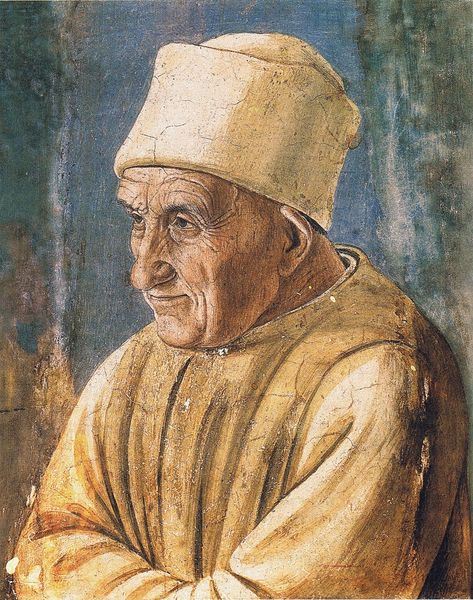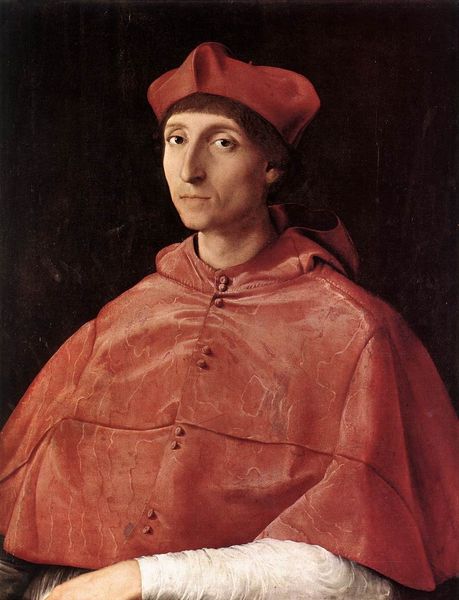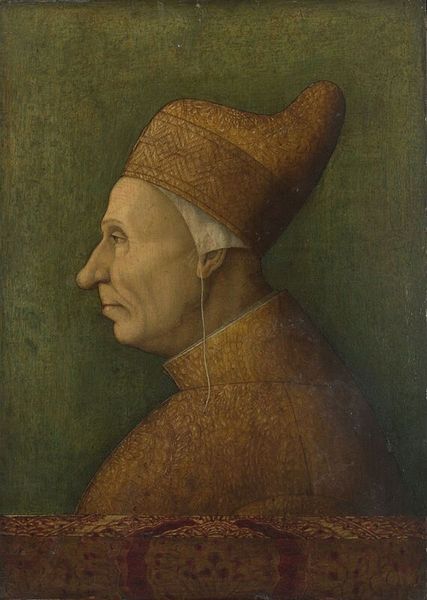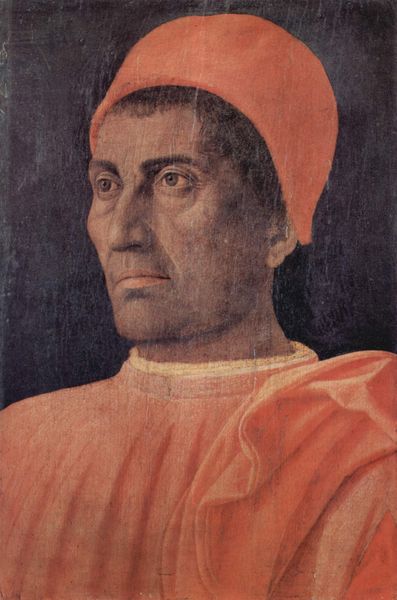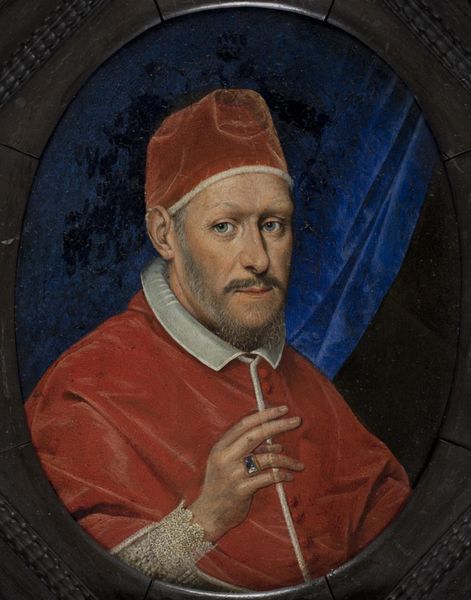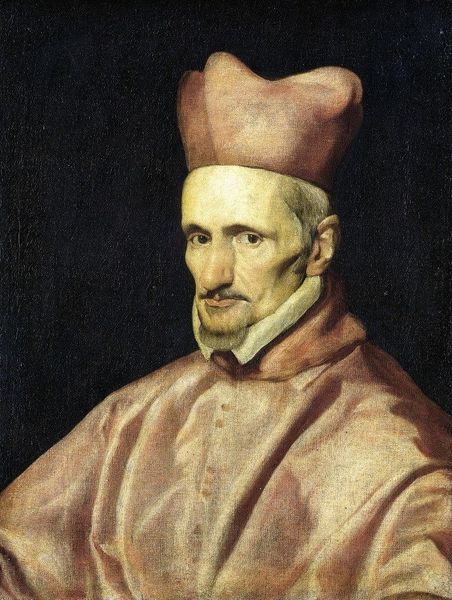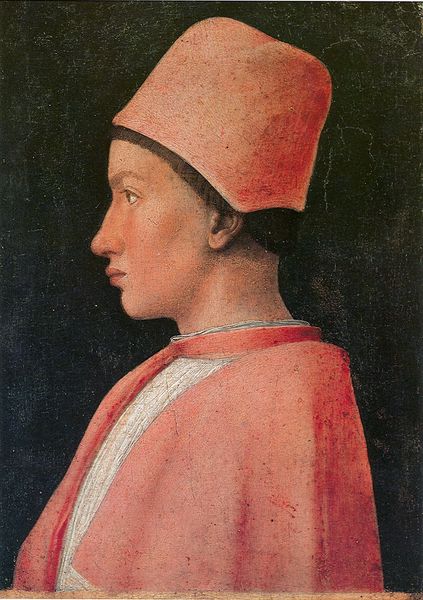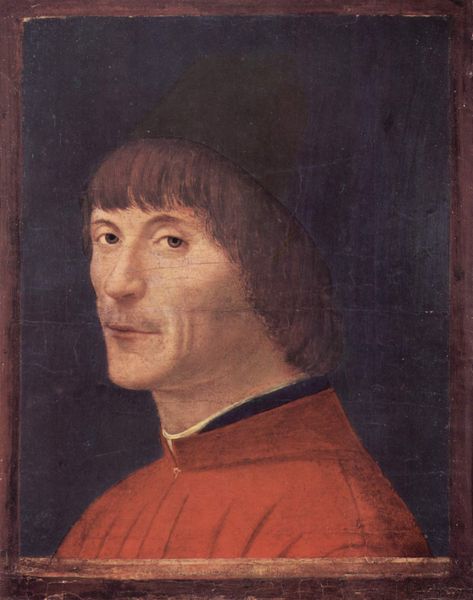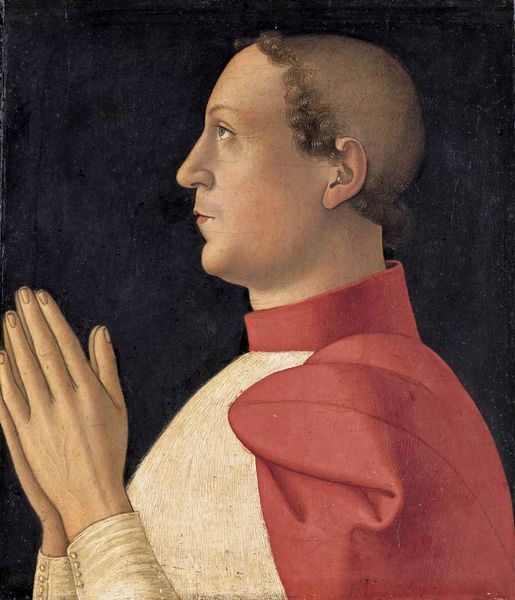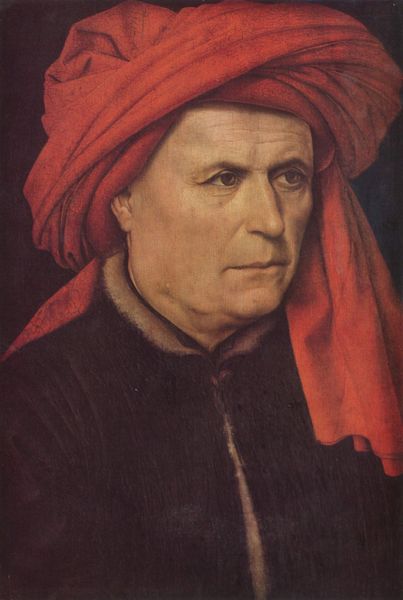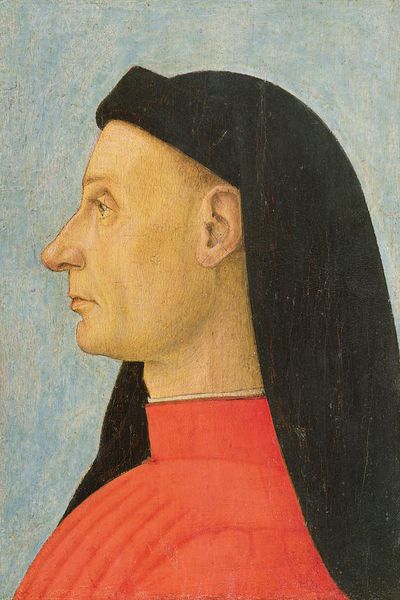
Dimensions: 32 x 29 cm
Copyright: Public domain
Curator: Here we have Andrea Mantegna’s "Portrait of a Man," dating back to around 1450. It's an oil-on-panel painting, exemplary of the Italian Renaissance. Editor: The starkness of the black backdrop against that almost luminous red immediately grabs my attention. There's something very commanding about this man's profile. Curator: Absolutely. If we consider the materiality, Mantegna’s use of oil paint allowed for a smoother blend of pigments and more naturalistic depiction than the egg tempera commonly used at the time. It signified a shift in artistic technique and opened up new possibilities for representing texture and light. Editor: And think about the sitter's attire, the rich crimson robe and cap. It is not just decorative. This kind of costly display signals status, likely somebody connected with civic power. Is the clothing itself part of a carefully- constructed image that would project prestige and perhaps even intimidation? Curator: The portrait also provides insight into workshop practices. It might have been commissioned, in that this patron was of sufficient means to acquire costly pigment, refined oil, and the artist's time. The social context surrounding its production tells us a great deal about the role of art within the wealthy class of Renaissance society. Editor: Moreover, his gaze, so self-assured! There's no denying he projects himself within a specific visual language. The early Renaissance was invested in this humanist ideal: placing humans at the center of existence. It's about identity, power, and male authority. Curator: I find the details remarkable; you can see every wrinkle and line in his face. It’s the raw truth captured. He has a strong presence through careful observation. The process seems essential to conveying this image to future audiences. Editor: The level of verisimilitude that this Renaissance naturalism offered was still relatively new. Today, looking at a face from the 15th century, it makes us reflect on enduring themes surrounding governance, power, and even mortality. The artwork makes us reflect on time and history, what we have left and how to learn from this glimpse into the past. Curator: It speaks to the way artists transformed materials and workshops into conveyers of social stature. Editor: Right, it gives a visual platform that has impact on the construction of identity politics to this day.
Comments
No comments
Be the first to comment and join the conversation on the ultimate creative platform.
